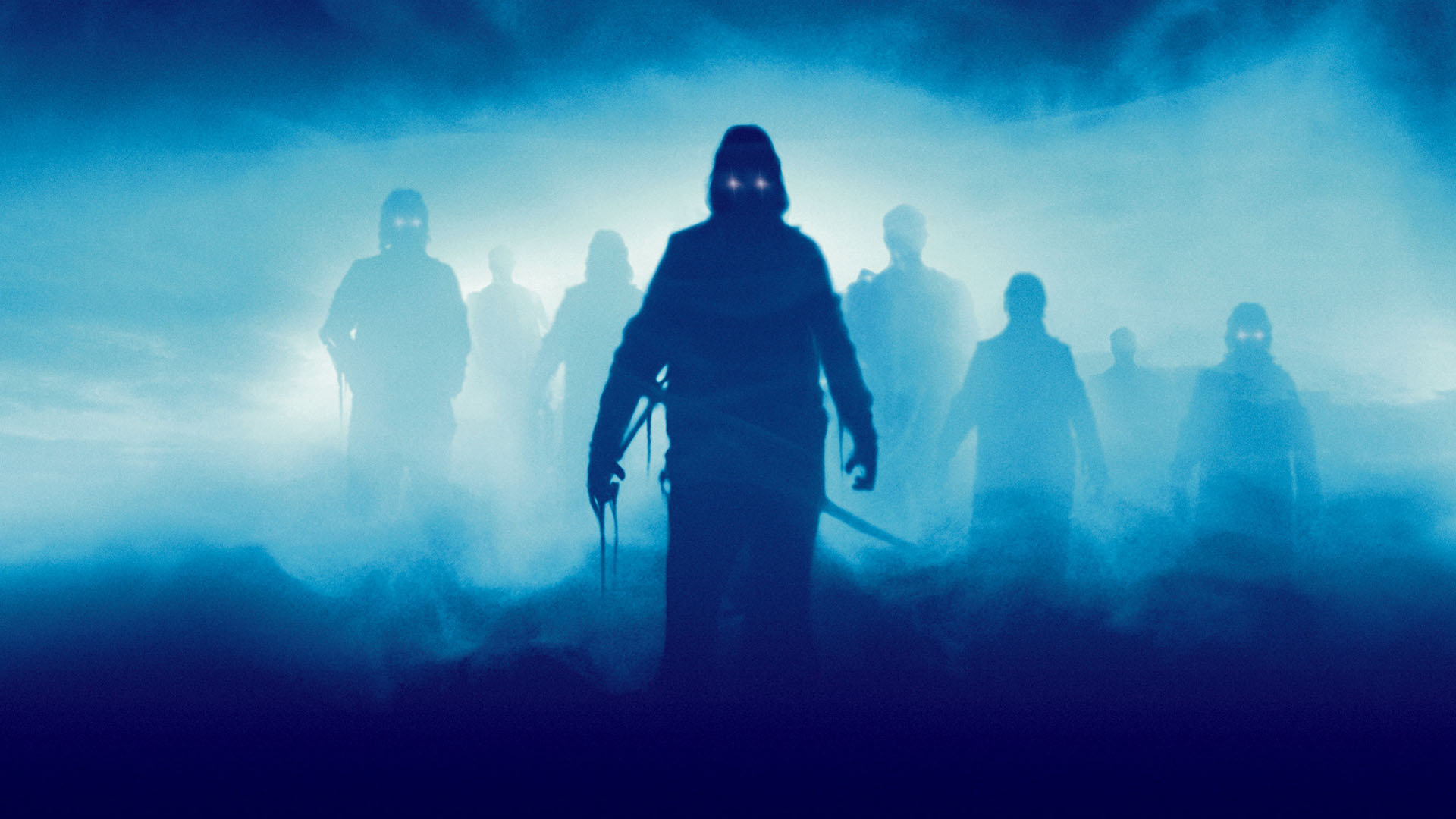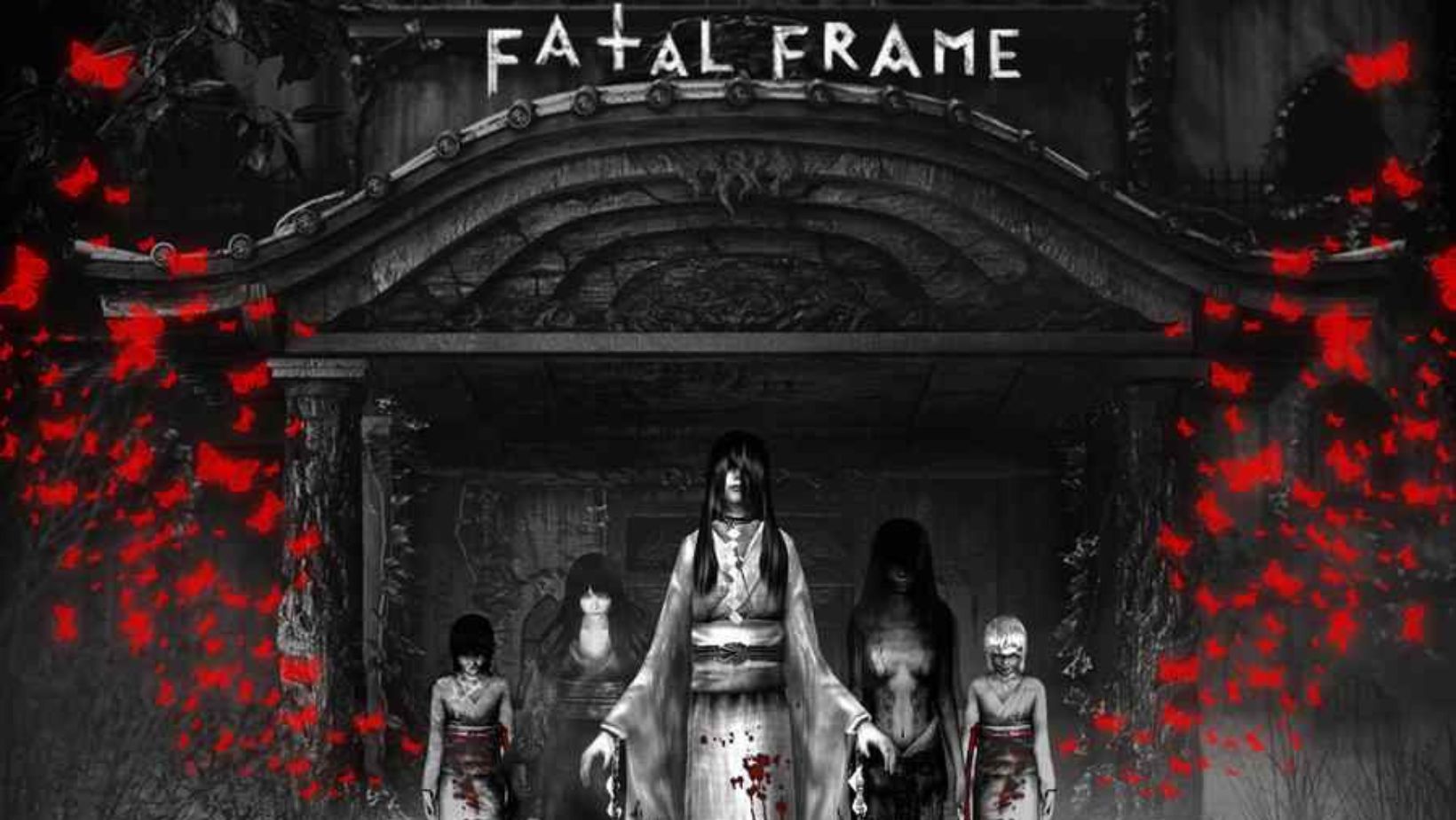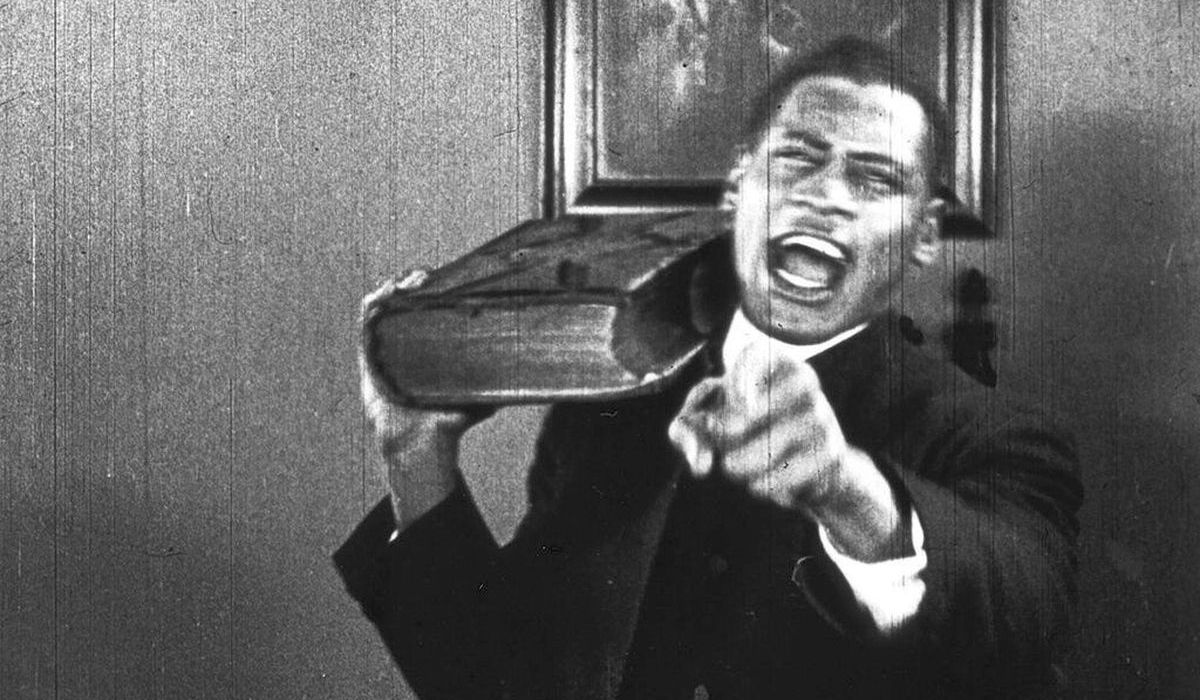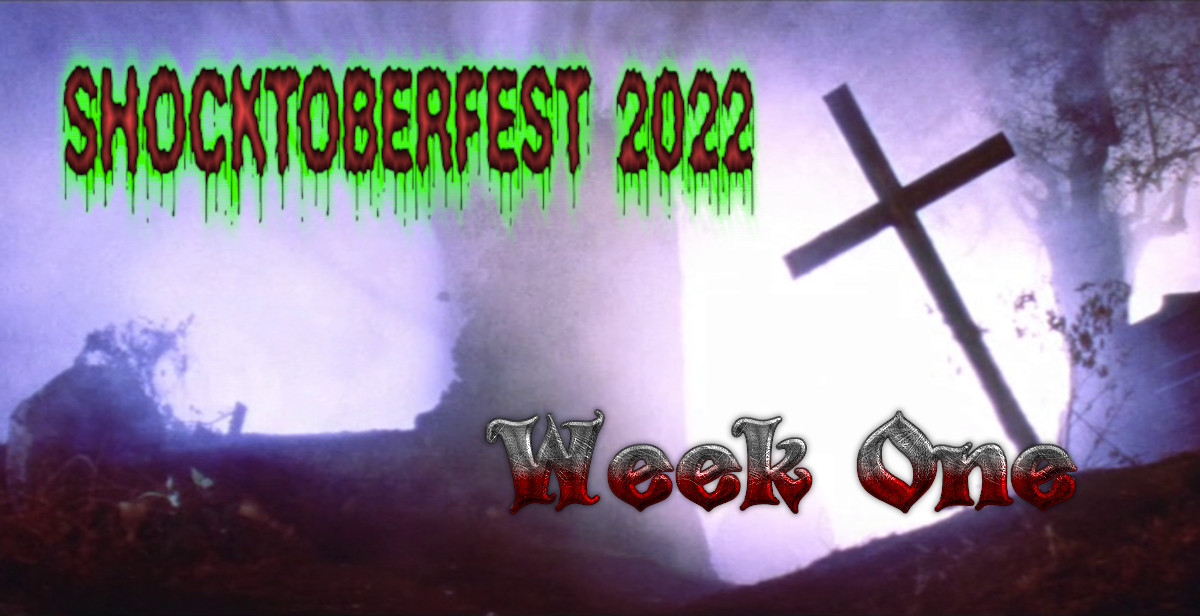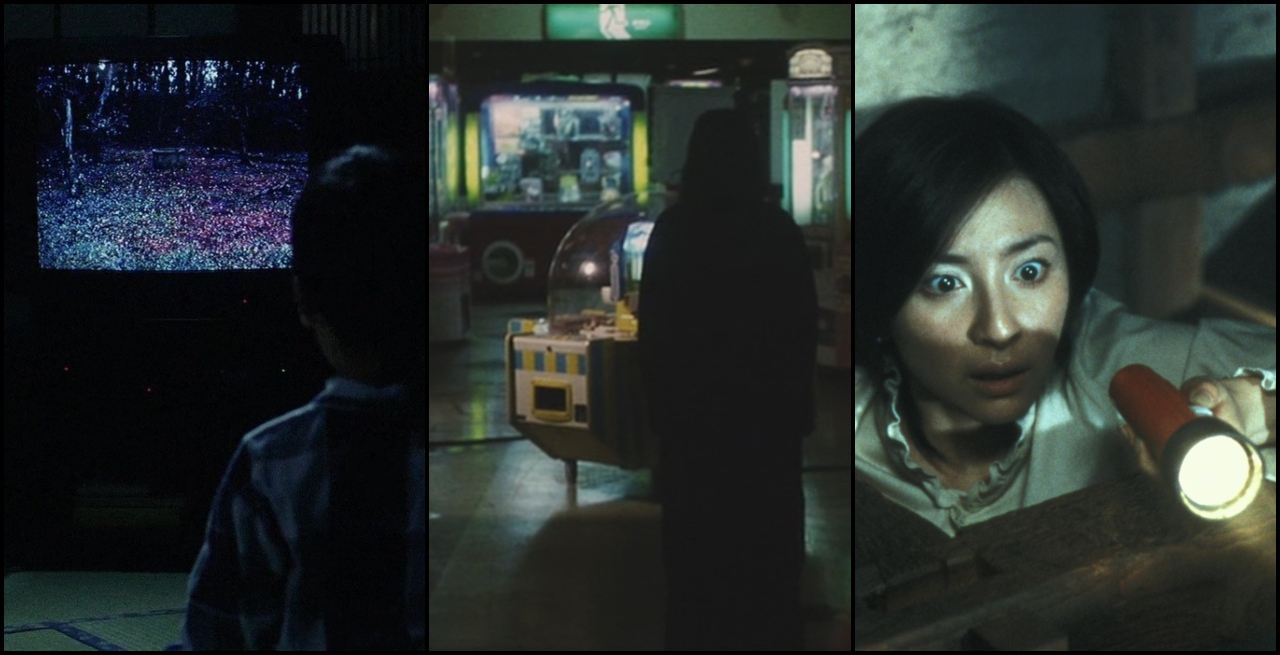
Japanese horror is no small beast, it had a Golden Era with horror movies at the turn of the 21st century that brought Asian horror to the forefront of the horror field internationally with adaptations to homages: Ringu, Ju-on, Dark Water, and more as iconic for the modern time. It established various tropes and displayed a stern cinematic craft of a genre long regarded as solely the dominion of grindhouse; elevated horror, however, was long a staple in J-Horror, productions possessing an artistry for higher themes alongside masterful cinematography.
The history of horror in Japan is enriched with their comprehensive folklore as a historic foundation, collected in the subject of ‘kaidan’ which are scary narratives performed in a variety of fields from masked theatre (kabuki) to even street performances of tales (kamishibai). The Western fascination with Japanese horror traces itself to numerous translated short stories from Lafcadio Hearn in the 19th century as the country rapidly modernized – these stories were especially focused on ghostly, vindictive apparitions such as ‘yurei’.
We will be recommending Japanese cinema in the genre of horror, and the best J-Horror from a modern catalogue (post-2000) – an era which evolved from the kwaidan eiga roots in films such as Onibaba to instead have more emphasis on technophobia as in the likes of Kairo (notriously a response to Japan’s abrupt modernization). Techno-horror, splatter films and supernatural horror – Japan has no end of diversity in their successes! Let’s begin our crash course on this modern era of J-horror – highlighting our thoughts on the best Japanese horror movies since 2000!
Kairo / Pulse (2001)
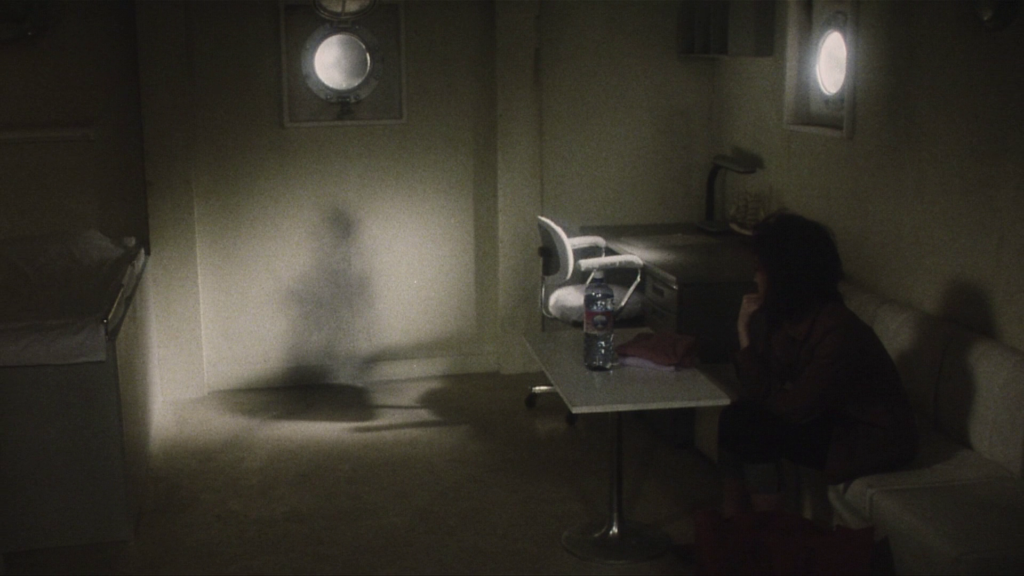
Kairo follows an apocalypse unfolding as an intricately crafted mood piece – spirits are gradually invading the world through technology and no longer content with merely haunting humans. Encapsulating a melancholic atmosphere, with disquietingly distant shots and obtrusive objects dividing the viewer from protagonists, these techniques were essential to serve an allusion of loneliness from a disconnect of rapidly developing technologies consequently fragmenting our society into a more compartmentalized existence. As the landscape becomes increasingly remote with crowds diminishing, and the characters losing contact with friends as all worsens, it expresses itself as a profound film in both point and atmosphere; the incisive music of whining chords only amplifying the dread surrounding such materializing isolation. A creepy masterpiece deserving praise of every aspect, Kairo has the legacy of the film to embody the best of J-Horror. Kiyoshi Kurosawa stands as amongst the most distinguished Japanese directors in general for a reason.
Noroi: The Curse (2005)
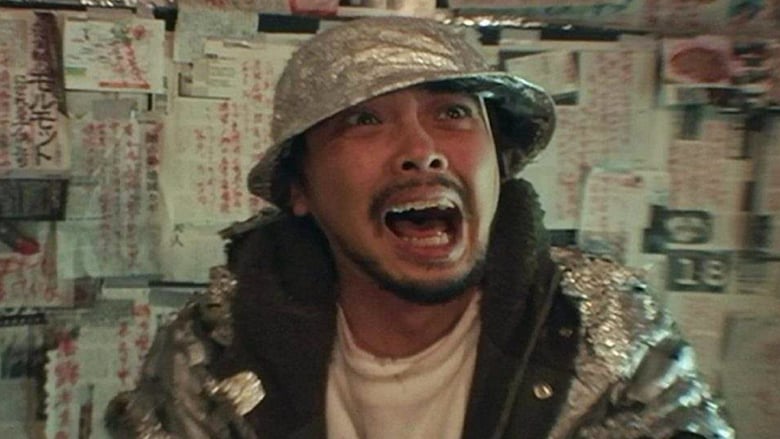
Noroi: The Curse is a folk horror that sequentially weaves a narrative of underlying lore into establishing a foreboding tone once we connect our understanding to the unusual, creepy events ensuing – an intellectually provoked dread as our realizations crystallize. We follow paranormal investigators in this fatal mockumentary as they investigate strange events all connecting to ‘Kagutaba’ as a dangerous entity and the increasingly dire circumstances contribute to an overarching sense of imminent catastrophe – we are witnesses of a doomed expedition into ruthless supernatural forces. The folk traditions and investigative angle interplay for a cerebral layer to the event(s) as a set up to an intelligent horror experience to have this as defining in Japanese horror. Uncomfortable in result, it is sure to burn into the viewer’s memory as a haunted impression on a recorded damnation. Kōji Shiraishi has proved formidable as a prolific horror director.
Miss Zombie (2013)
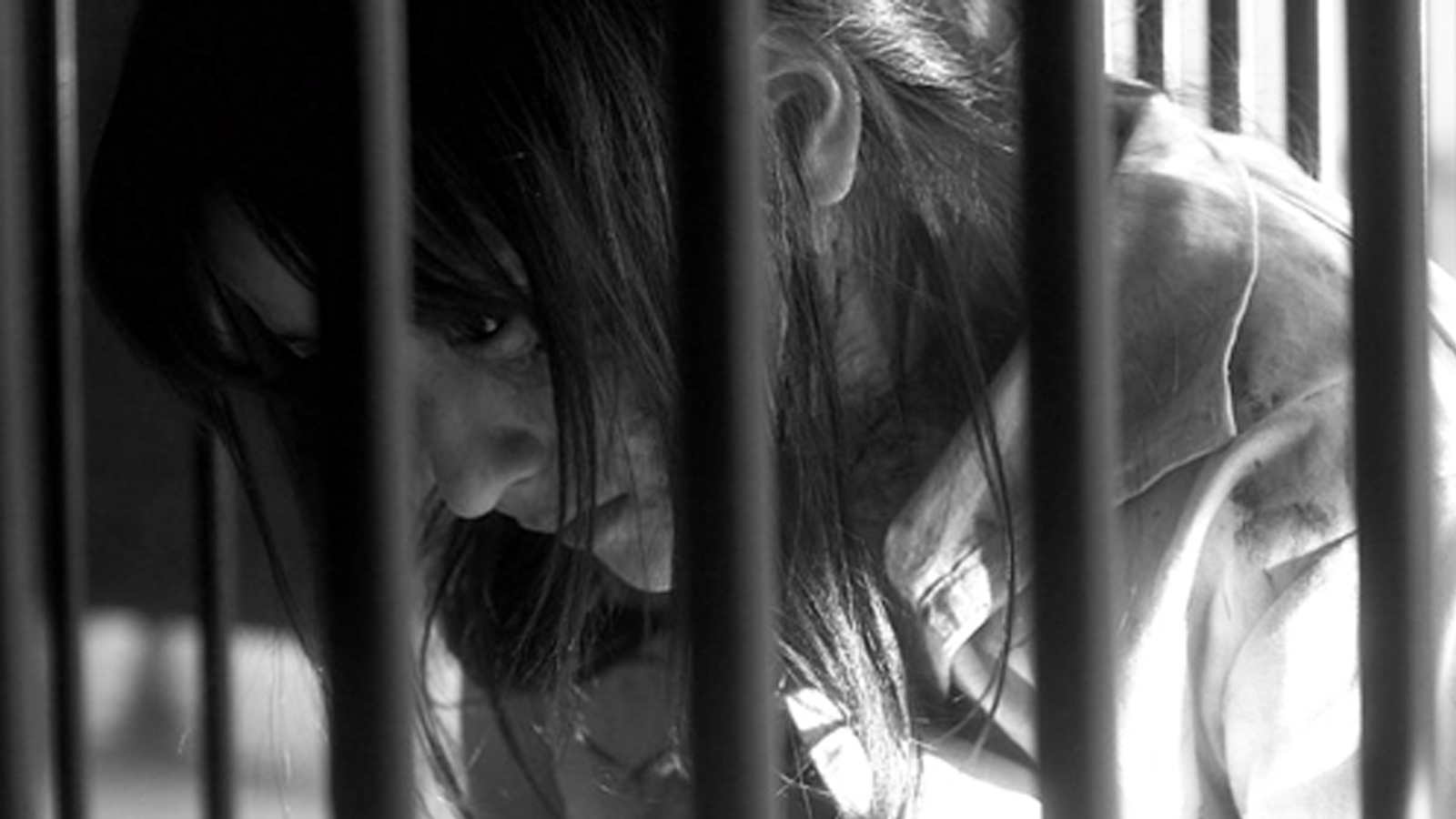
‘Miss Zombie‘ is one of Sabu’s (Hiroyuki Tanaka) finest achievements, a blend of silent movie homage, domestic drama, zombie movie and commentary on the rich exploiting the poor in a dystopian social order. In the future, zombies are domesticated and made to serve families. In a story with similar beats to those of The Handmaid’s Tale’, one such zombie, Shara (Ayaka Komatsu), is mindlessly doing her chores, even as she remembers details of her past life. She is soon desired by the husband, ends up bonding with the child and reviled by the mother. A melancholic mood-piece that casts a dark spell, this has some extremely cruel, but satisfying plot twists (they could be described more as twists of fate, or transgressions piling up, something Sabu is very adept at). A tale of humanity, motherhood, abuse, suffering and pure emotion, with black and white cinematography and a mindblowing ending in which everything comes together, ‘Miss Zombie’ feels like an operatic masterpiece, and is one reinvention of the zombie that still feels fresh and haunting.
Audition (2002)
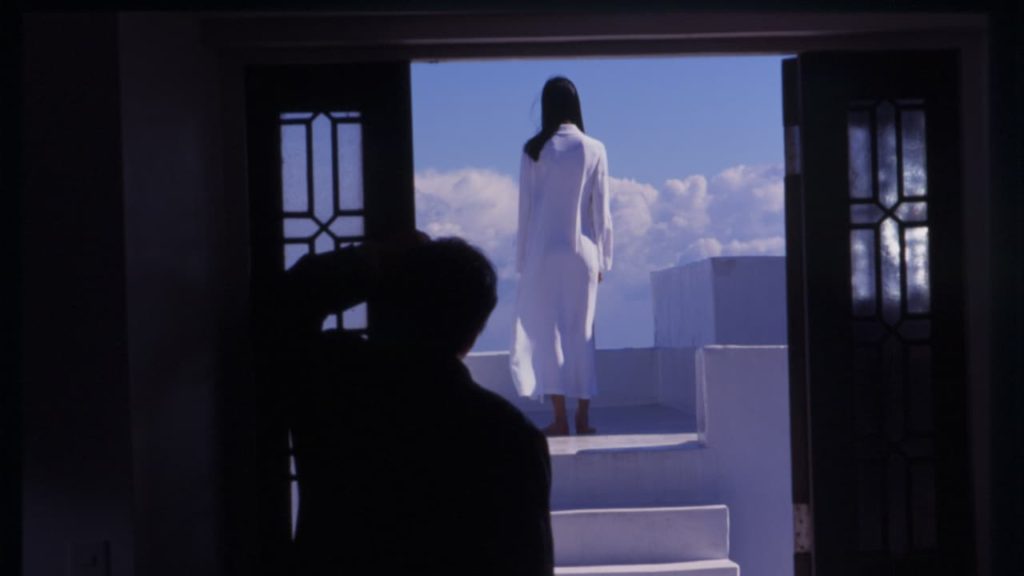
Audition follows a widower in despair whose wife is deceased – there’s no solace in his lonely life and any romancing has proven futile. His friend, however, sets up a fake television audition to screen prospective partners as a romantically charged setup that’s soon subverted – the preferred woman isn’t all she seems. As it’s revealed she’s no ordinary date in unsettling behaviour, and a disturbing backstory unveils to further reinforce this, her vile machinations are revealed in a shocking finale to have this film as memorable; his desperation was a vulnerability to open himself into a torment of an immensely vindictive femme fatale. The twist of the genre, extreme conclusion and methodical build-up into these two consolidate Audition as an appropriately revered classic – Takashi Miike has a rabid fanbase for a reason.
Noriko’s Dinner Table (2005)
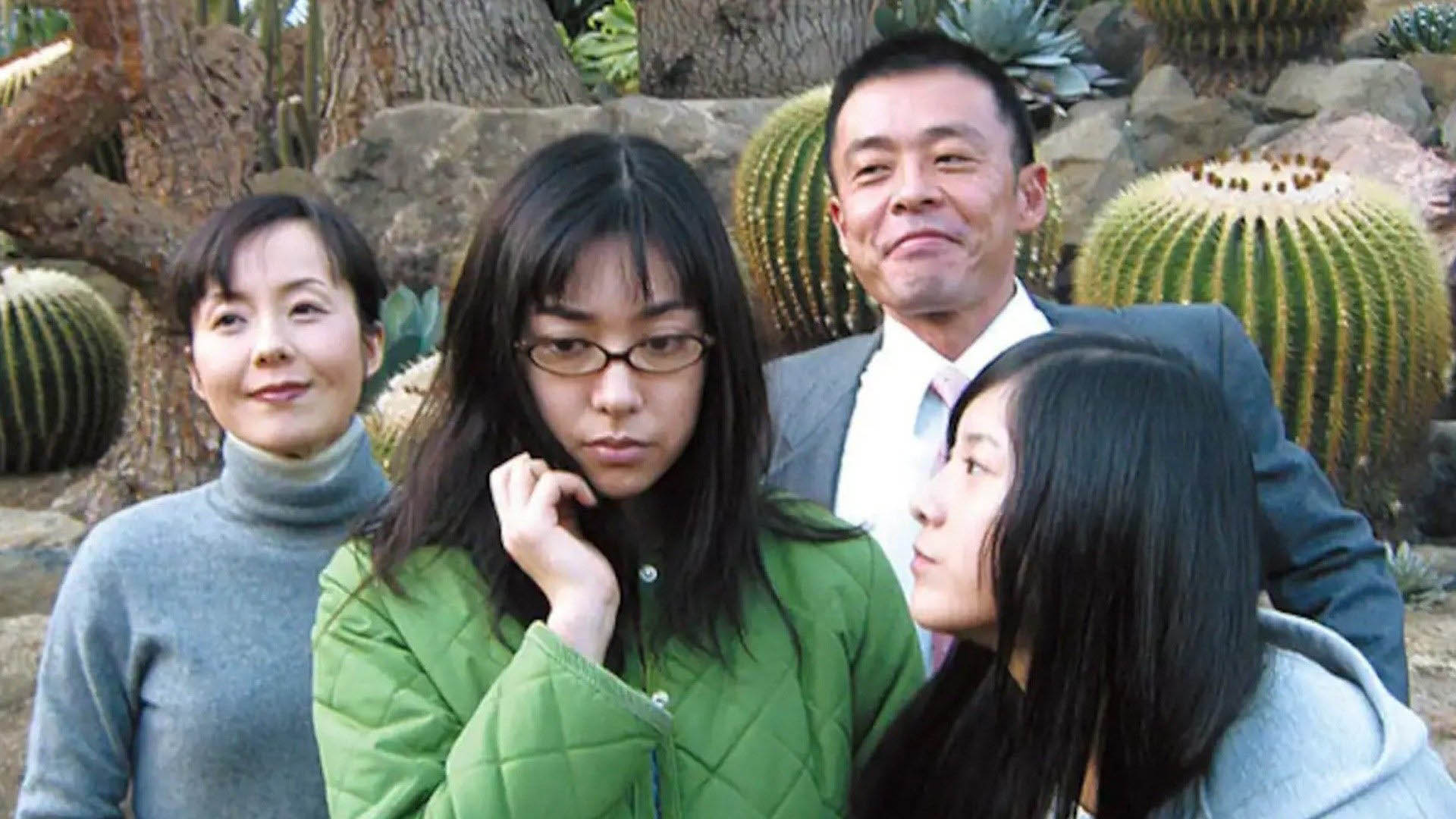
Noriko’s Dinner Table is the refined successor to Suicide Club as a continuation of that visceral horror in a more intimate manner, exploring the uncertainty of personal identity, role in society, and the alienation we may feel as these contradict. It follows the lost Noriko fleeing a rural family life and into Tokyo as she becomes involved with a cult strangely titled ‘Suicide Club’. Their activities, including disturbing links to events in the earlier film Suicide Club, are especially strange and disorientating – family roleplay a particular business concentration. The violent outcomes of internal confusion is no surprise in a society demanding conformity against our nature – Noriko’s Dinner Table is poetry on the role we dutifully adopt and the destructively rebellious instinct rising to counteract it. The visionary Sion Sono was the mastermind of this poignant social commentary scrutinizing the horrors of interpersonal relations and the discord of our own identity concerning these.
Battle Royale (2000)
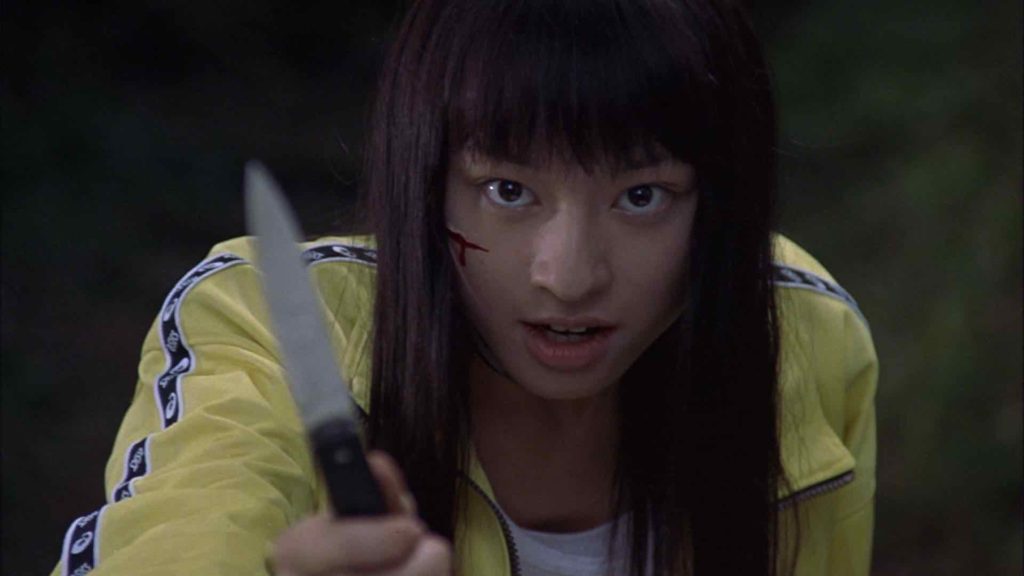
Battle Royale is a survival horror of the most brutal and challenging dynamic – a classroom must eliminate each other until only there is only a single survivor. This setup is a test of morality in how they respond to such an extreme situation, their loyalty to friendship/cliques, and the psychological pressure of a life-or-death choice to partake in such violence – the format provides an intense character study of varied personalities. Explosive results ensue with how these characters interact as an inevitably violent fest where ordinary, innocent people transform into embracing the darkest human instincts. The film follows an amiable and devout pacifist, Shuya Nanahara, who is completely at odds to the terror presented and expected – he embodies the antithesis of all one must become to endure the ‘game’ as an intriguing baseline from where horrors are contrasted. Kinji Fukasaku directed this as his final film and as a master of the yakuza films to samurai flicks, his versatility is a legacy of note.
One Cut of the Dead (2018)
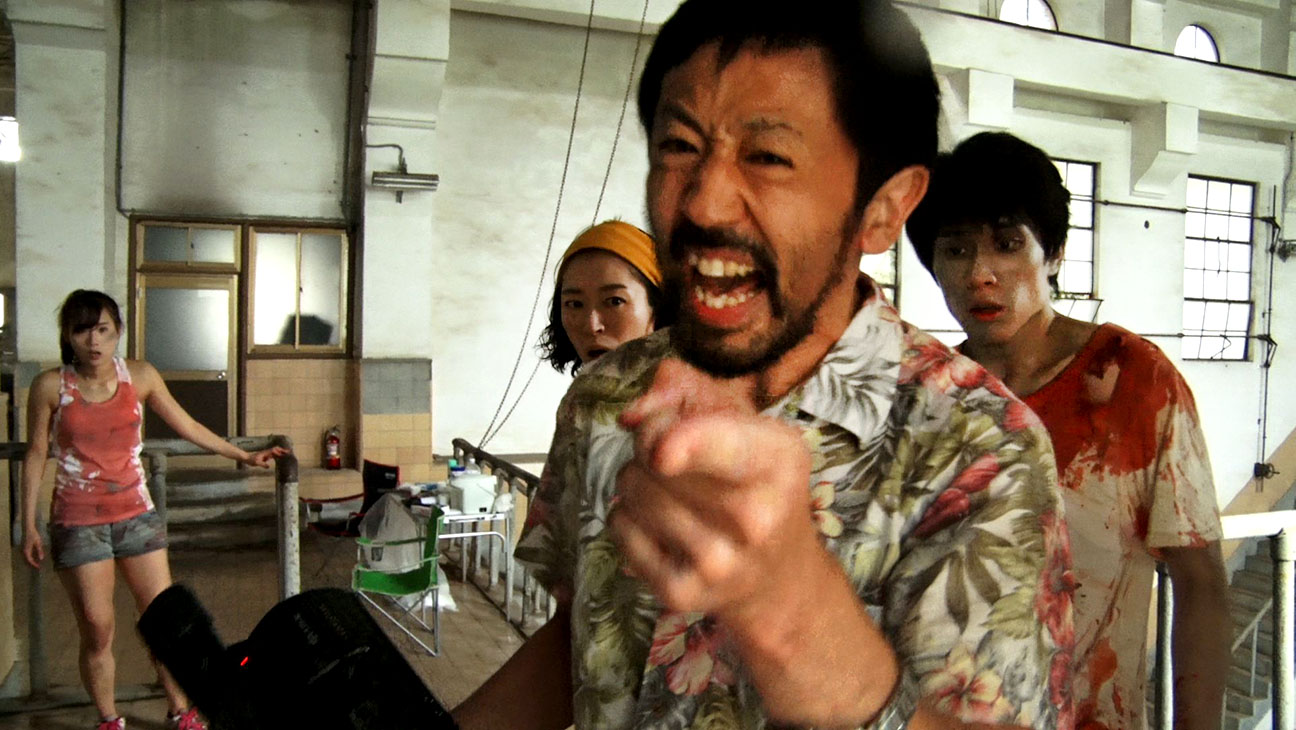
One Cut of the Dead is a powerful horror comedy and tribute to cult filmmaking which horror typically attracts – the fervent passion, ingenious improvisation, and dedication from a crew entangled in an agonizing deadline with all the pressures of a suffocating budget. Opening as a campy horror b-movie to which we are all familiar, which is deliberately irritating as it is predictable, One Cut of the Dead has proved J-Horror is strong as ever to be a feat in both the wit and the purpose – the pinnacle of Japanese cinema. Enthusiastically acted and filmed with an overwhelming energy, while providing a layered narrative sure to captivate as it unravels, this is a film of bustling charisma sure to persuade anybody of the potential in Japanese cinema: fabulously entertaining, splendidly clever, and fantastically funny – few adjectives do justice to the high caliber this film has whimsically raised for horror commentary.
Infection (2004)
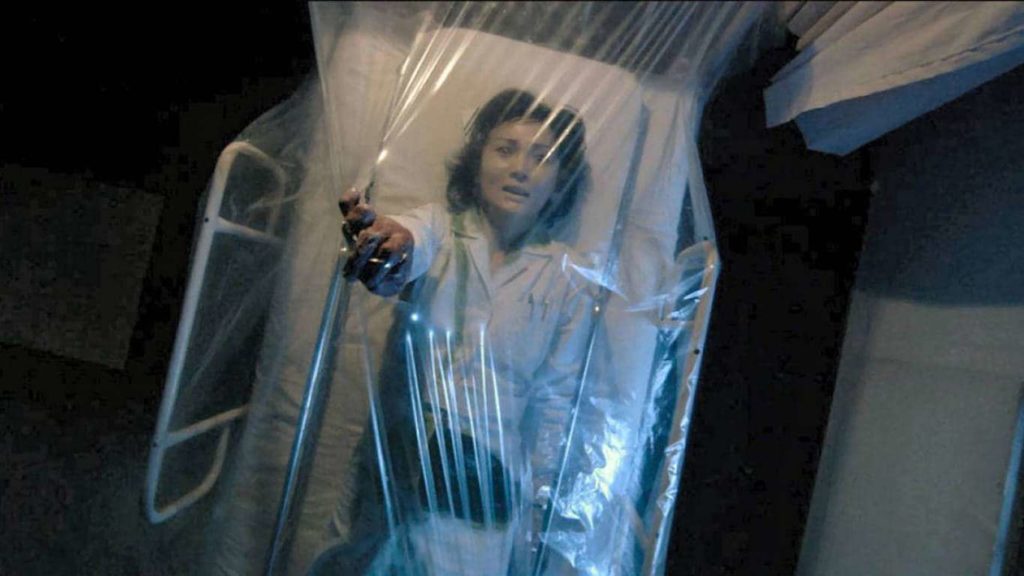
Body horror at its best, Infection also works well as a mystery/supernatural thriller. Arguably the genre and source of the odd viral disease in the hospital is debatable, but what is certain is the production’s brilliant use of color as a horror device and superb moments of squeamish body horror. In addition, the production has some of the best gross-out scare moments in cinematic history, when you see it you will know. Ultimately, Infection is a well-executed horror film that is certain to please fans.
While the lack of budget is apparent, with the title being an made for TV movie, its inventive approach to horror has earned it deserved cult success with its inventive approach. Don’t let the rough production values deter you at first, the film becomes wonderfully disturbing fast.
Helter Skelter (2012)
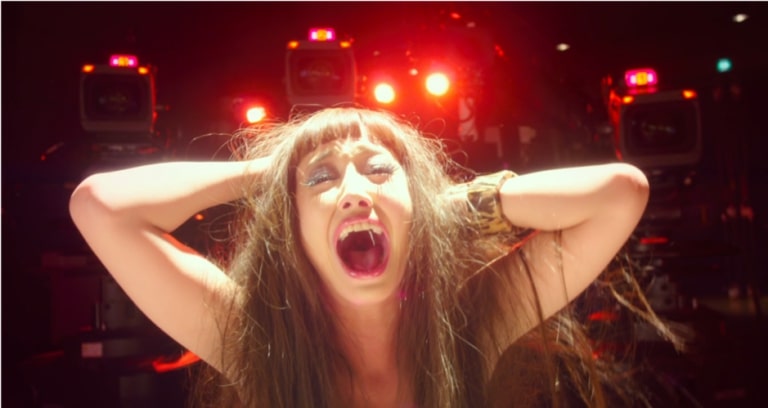
Wonderfully fashionable and beautifully saturated with lush color, Helter Skelter explores the real life horror of bodily obsessions and the competitive landscape of the fashion industry. Based on the manga of the same name, the original work was birthed out of Kyoko Okazaki’s own reflections of the problematic nature of the industry based on her time as a fashion illustrator. While Helter Skelter certainly presents an extreme scenario of obsession within the industry, it perfectly captures the paranoia and body obsessions (turned body horror) in a way that is as relevant now as it was in the 90s when the work was originally published.
Director Mika Ninagawa has not only proven herself as a strong name in horror but as a multifaceted director with a knack for visual flair. The film coming from a female mangaka, about a subject largely concerning women in a competitive industry adapted by a notable director, makes the worth noteworthy for those who want to explore women in horror. However, to assume the content is restrictive because of this is a fool’s errand, the film is stunning and speaks to universal fears and insecurities tied to beauty that transcends the idea it will only appeal to one gender.
Ring 0: Birthday (2000)
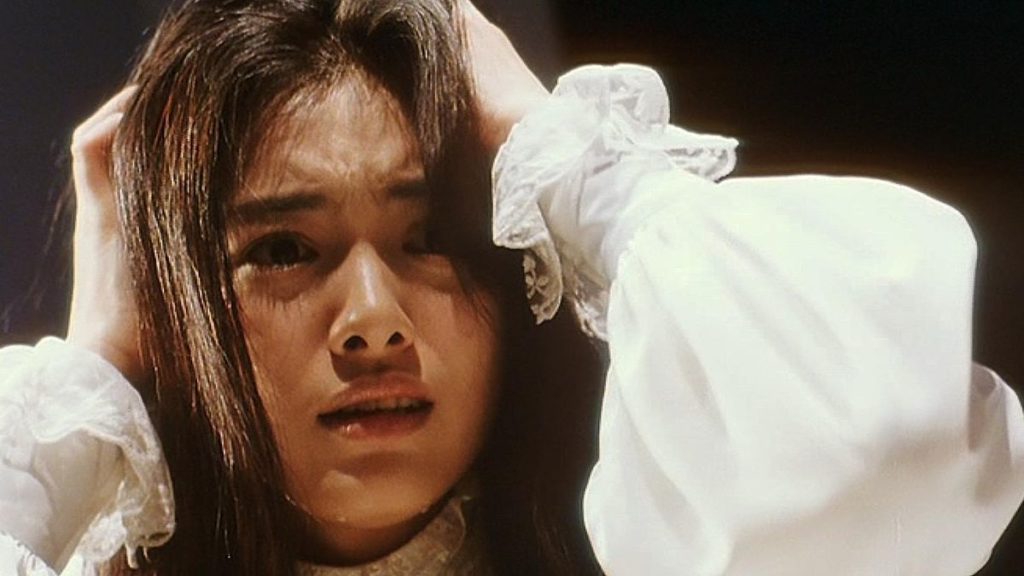
Who among us hasn’t heard of Sadako or her American incarnation, Samara? She is an onryo, a spirit possessed by a single emotion: vengeance. Yet in Ringu 0: Birthday we discover that she was once a gentle young woman. In this prequel to the classic, Ringu, we learn about her as a person, her short tragic life, and what drove her to become the hateful creature she is now. Ringu 0 Birthday is an adaptation of “Lemon Heart”, a short story by Koji Suzuki, who also penned the Ringu novels.
The film takes place thirty years before the events of Ringu. Yamamura Sadako is an ethereally beautiful, talented young stage actress making her debut. There is also something odd and unusual about her, of which she is painfully aware. Her co-workers grow increasingly mistrustful of her and eventually push her to the brink. Yukie Nakama is cast in the lead role and she brings out the character’s purity and innocence. The audience firmly empathizes with Sadako despite knowing the grief she will cause in the future.
It is a worthy addition to the Ringu franchise. Audiences who know their horror movie history may identify the stage play within the movie and can have a bonus bit of fun, comparing the story of the play to the events in Sadako’s life at that point.
Kasane: Beauty and Fate (2018)
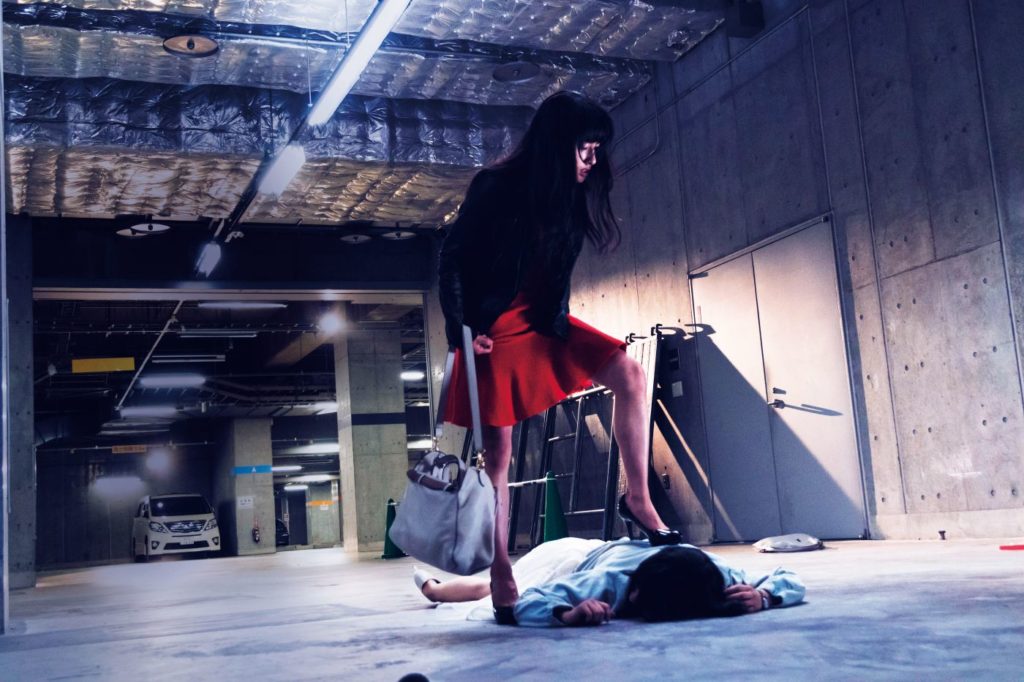
Kasane: Beauty and Fate is a live-action adaptation of the creepy manga series Kasane. The titular Kasane is a young woman whose mother was a renowned stage actress. She wants to follow in her mother’s footsteps and she has the talent. The one hitch: she is unpleasant to look at, to the extent that she resorts to hiding her face with her hair. Enter a magic lipstick that enables her to exchange faces with anyone she kisses while wearing it and an acting agent who persuades her to exchange faces with an attractive but no-good actress.
The movie explores how one’s looks affect one’s personality. When society places so much importance on looks and when they are a significant part of how one perceives oneself, how is it not possible to affect the personality? This is the question Beauty and Fate pose and answer and goes against both the ugly-equals-evil shorthand traditional fairy tales use and the adage that beauty is only skin-deep. The acting industry, where looks are highly valued, more so than anywhere else, provides the perfect backdrop to delve into this theme.
Both the leads, Tao Tsuchiya and Kyôko Yoshine, play both the roles on different occasions and often play one actress playing the playing, and even one actress playing the other, playing a character on stage. It is a testament to the directing and acting talent that we are never in doubt as to who is who. Tadanobu Asano plays the slimy acting agent, sweet-talking both the actresses and he is entertaining as always.
Uzumaki (2000)

Uzumaki opens in a cozy, if somewhat isolated, little village. Life there is largely pleasant. Only one man had been behaving oddly of late. He developed a strange obsession with spirals but his family is supportive. But a strange phenomenon is quietly spreading through the town. A girl finds her hair curled into spirals, someone else has developed snail-like characteristics and before the townsfolk realize it, their community is taken over by spirals. The events are beyond anyone’s understanding and despair sets in.
This is one of those films that can be described as an experience. We can feel the town moving from bright and cheerful to strange and finally descending into hopelessness. We see many different oddball characters and how each of them eventually loses their minds. The hero of the story is rather atypical, a character not usually shown as such in movies. The visuals are creative, but that is unsurprising given that it is an adaptation of a Junji Ito work. Their low budget only enhances the atmosphere of the film.
The Inerasable (2015)

Just when I thought that Japanese horror films had succumbed to the Hollywood curse of remakes and reboots, e.g. Sadako 3D and Ju-On: Beginning of the End, The Inerasable seemed to come right out of nowhere! Based on a novel by Fuyumi Ono, the film follows Ai, an author of mystery novels, as she attempts to solve a real-life mystery with a university student named Kubo, who also happens to be a fan of her work. Kubo initially reaches out to Ai via letter, where she explains that she has been hearing very strange noises in her new apartment. The two of them end up unveiling a series of murders and suicides from the past that seem to be influencing the events happening in the present.
The overall film is actually quite tame when it comes to the horror elements, but that is exactly why it was such a welcome surprise at the time of its release. Fans of the more stripped-down efforts from the likes of Kiyoshi Kurosawa or Hideo Nakata will no doubt find plenty to adore here; the scare factor relies heavily on the story and the foreboding atmosphere, leaving no room for gimmicks or unnecessary CGI. (Oki)
Pet Peeve (2013)
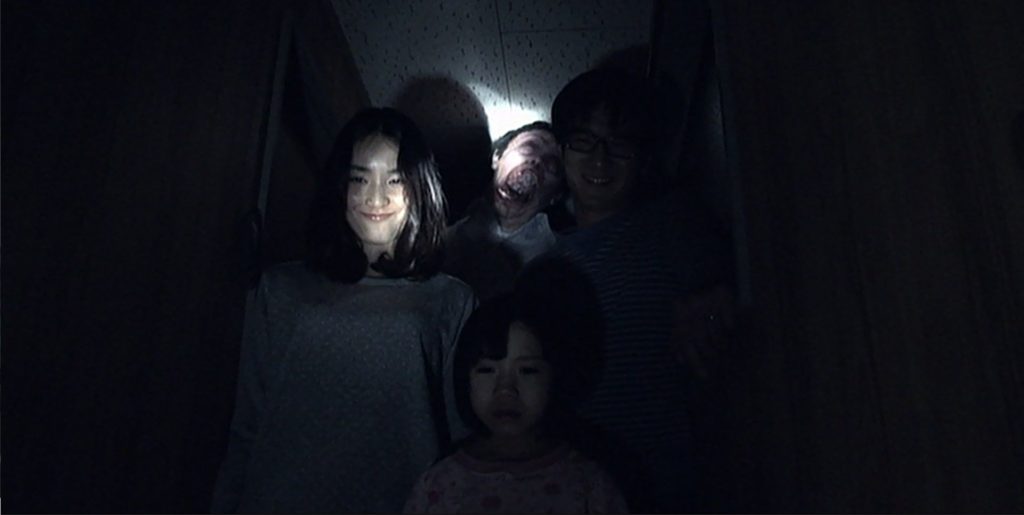
Based on the manga Fuan No Tane by Masaaki Nakayama, Pet Peeve plays out like an anthology film with two characters loosely connecting the myriad of events. After moving to a new town to pursue university, a young man quickly realizes that strange occurrences are plaguing numerous areas of his new home, including the restaurant where he just got hired. His first bizarre encounter is with a customer wearing a hat that obscures his face who sits alone in a booth at said restaurant. Although he is warned to not approach this customer by his new friend Yoko, the young man does so anyway and receives no response. Having looked away for only a moment, the young man is shocked to realize the man with the hat has suddenly disappeared.
The man with the hat is only one of the many fantastical segments in the film, and it’s certainly not the strangest! The events in the film are so incredibly entertaining that I refuse to spoil any of the others. The plot may feel a bit jumbled due to the out-of-sequence format, but the jarring imagery and creative scenarios are more than enough to warrant this frightfully solid viewing experience! (Oki)
Carved 2: The Scissors Massacre (2008)

Renowned urban legends have been retold so many times over the years that it becomes hard to decipher which version is true. When it comes to the Slit-Mouthed Woman, there is a generally accepted version of the story, but more obscure versions still exist. Although suggested by the title, Carved 2: The Scissors Massacre is not really a sequel to Koji Shiraishi’s Carved from 2007, but is instead a stand-alone piece that tells a different version of this character’s origin, and it does so in a much more effective way than the first attempt. Set in 1978, Carved 2 follows the character Mayumi, a cheerful high school student whose face is disfigured by an attack with sulfuric acid, which leads her down the path to becoming the scissor-wielding mass murderer we’re all familiar with.
The film succeeds at building up to the eventual transformation by starting as a drama; we get a good look at Mayumi’s life before the incident, her relationship with her family, her friends, and even her crush from school. It’s almost too joyous at first, a stark contrast to the brooding final act, but things get progressively worse for our lead as the story unfolds, resulting in an oddly satisfying ending. (Oki)
POV: A Cursed Film (2012)

If you’re an avid fan of Japanese horror, you have more than likely come across a fair share of ghost videos from Japanese TV shows such as Unbelievable! on YouTube. POV: A Cursed Film takes this concept and uses it as the overarching story; during one of the ghost video segments of a popular TV show, the cast and crew experience a paranormal occurrence in real-time while watching one particular video clip. This clip leads our two heroines, Haruna Kawaguchi, and Mirai Shida, to the high school where the footage was initially recorded, and they begin to investigate the supernatural incidents that continue to follow their every step.
Filmed in a first-person perspective, POV is certainly not the first mockumentary flick to come out of Japan, Psychic Vision (1988) certainly comes to mind as one of the most effective, but it somehow manages to still feel fresh while playing around with some of the more common tropes of found footage horror. The fact that the lead actresses play themselves in the film certainly adds to the realism in a sort of Blair Witch way! (Oki)
One Missed Call (2003)
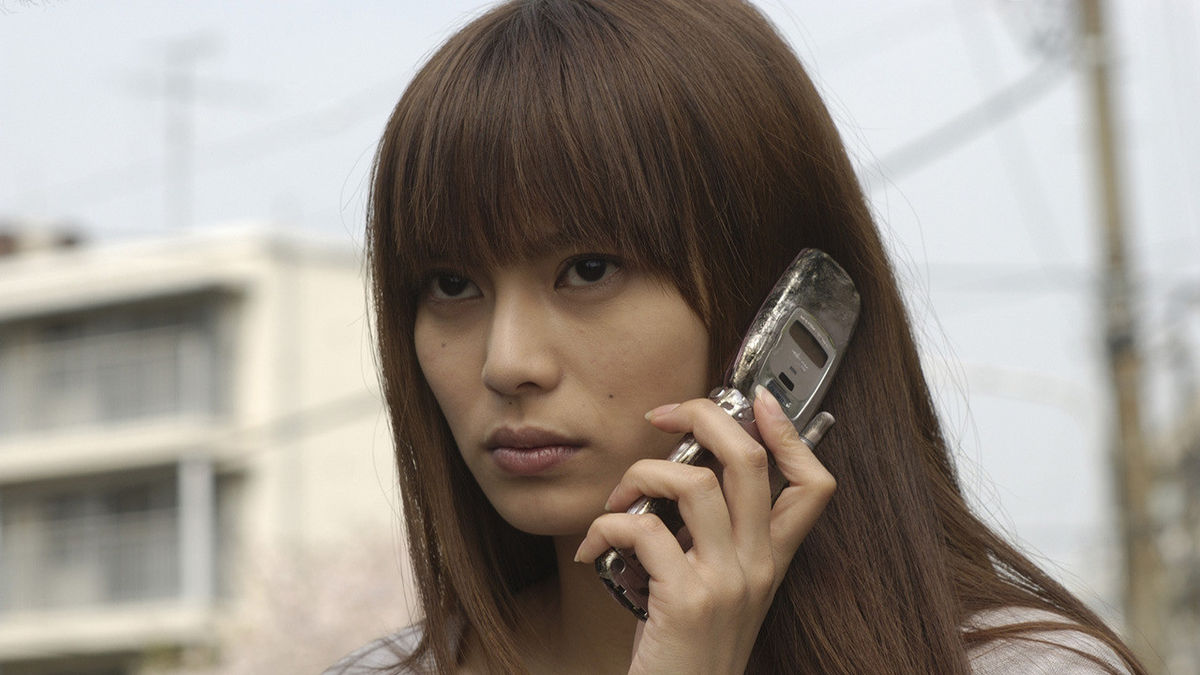
Perhaps the most conventional horror flick to come out of Takashi Miike’s filmography, One Missed Call was released during the peak of the J-horror boom that graced the US and UK in the early 2000s. Based on the novel by Yasushi Akimoto, the film follows a group of university students who begin receiving strange voicemails from themselves and dying exactly three days later, at the exact time that the voicemail was recorded. It becomes Yumi’s goal to find the source of these voicemails when her friend Yoko is killed while on a call with her, and the pressure becomes much higher when she receives one of these voicemails as well.
Modern technology has been famously incorporated in supernatural films such as Kairo and Ringu, but it’s the latter that Miike seems to have taken plenty of notes from. I would say that this film is almost a love letter to Ringu, often hitting some of the same story beats and exhibiting numerous visual parallels. One Missed Call is far from redundant however, and it boasts some very solid performances from the cast, plenty of gruesome and memorable deaths, and is drenched in Miike’s auteur style but with a more commercial flair. (Oki)
Ju-On: The Grudge (2002)
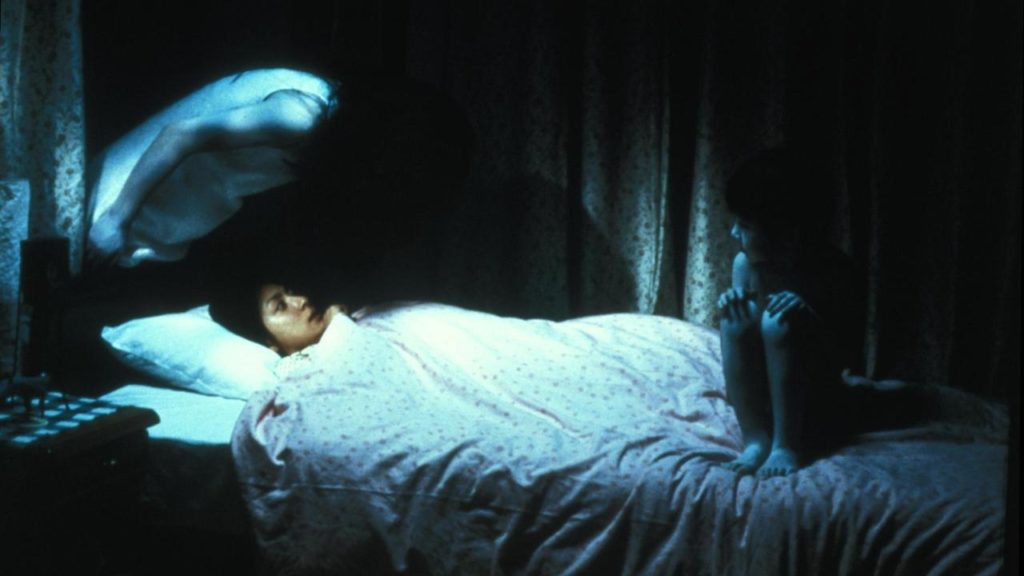
Perhaps cliche to include, but the fact remains that no definitive list would be complete without its presence. The film follows a variety of characters all connected by their encounter with a particular house saddled with a curse tied to the murder of Kayako Saeki (Takako Fuji) and her son Toshio (Yuya Ozeki). Often imitated but rarely surpassed, this first theatrical entry in the Ju-On series sat the gold standard in J-Horror for years to come. What began in the ’90s with television specials such as Scary True Stories and Hideo Nakata’s Ringu culminates here as Takashi Shimizu gives us the definitive “pale ghost with long black hair” experience. With non-linear storytelling driving viewers to unravel the mystery of the curse, pulse-pounding tension behind every scare, and the iconic death rattle that likely still haunts the dreams of viewers even today, Ju-On: The Grudge remains a masterclass in the genre. For all its fame, the film is just that damn good still resonating with new fans today and sticking around in your mind for years to come. The film has an eternal quality with a pervasive charm, not unlike the undeterrable nature of its titular curse.
Nightmare Detective (2006)
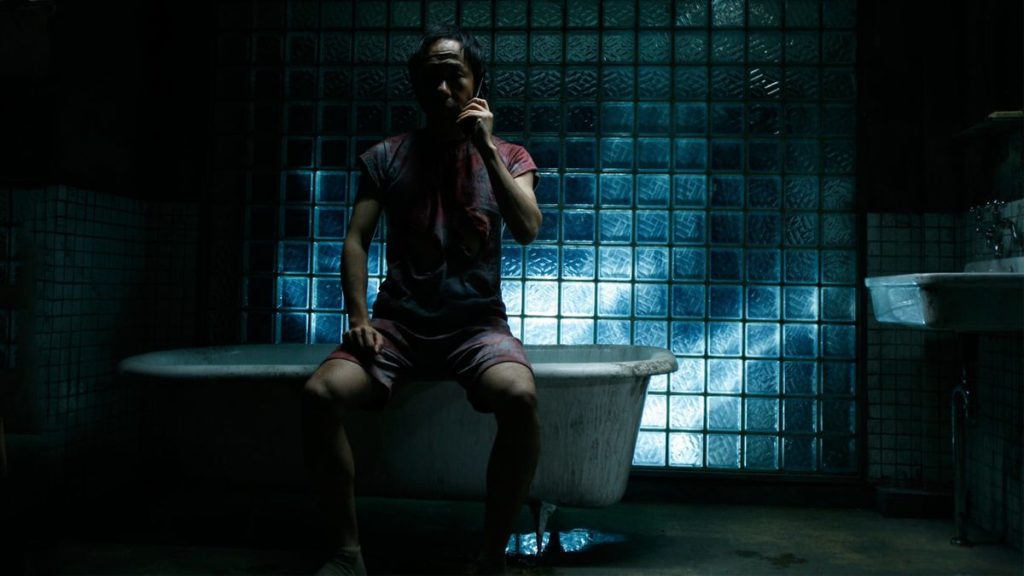
Shinya Tsukamoto should be a name on the radar of any serious fan of Japanese cinema, but this lurid mid-2000s surreal serial killer flick has unfortunately gone overlooked and underrated by many. Cool-headed detective Keiko Kirishima (Hitomi) is forced to draft in Kyoichi Kagenuma (Ryuhei Matsuda), a strange man with the ability to enter others’ dreams, to solve a series of murders that defy reality. Considered too mainstream by diehard Tsukamoto fans, wider audiences tend to be equally put off by the director’s trademark frantic camerawork and the in-your-face nihilistic tone of his storytelling. This is a shame because, at its core, we have one hell of a movie mashing up the very best of grim police procedurals like David Fincher’s Seven with the creative supernatural premise of A Nightmare on Elm Street while Tsukamoto himself performs wonderfully as our “dream demon” at the center of all the chaos. With compelling visuals and a hard look, thematically, at suicide Nightmare Detective is a powerful work that is worth re-evaluating.
It Comes (2018)
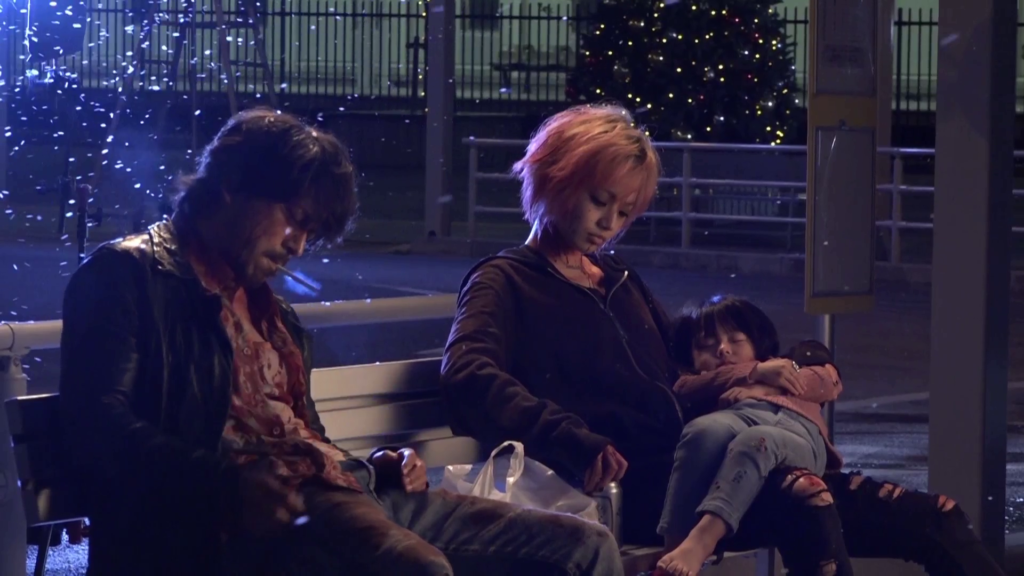
There’s an unfortunate trend recently where many suggest that J-Horror is in a state of decline. This Tetsuya Nakashima-directed flick is the defiant answer to such suggestions. Hideki Tahara (Satoshi Tsumabuki) is forced to team up with shady journalist Kon Nosaki (Junichi Okada) and equally odd exorcist Makoto Higa (Nana Komatsu) to protect his wife and young daughter from a mysterious supernatural being. The folkloric “Bogiwan” that haunts the family is a killer concept for a monster, said to spirit away children, and is effectively presented in the film with its presence known but never fully seen. And nothing is quite what it seems either, as the story weaves through several twists and revelations creating a darkly complex and mature story that culminates in an excellently choreographed exorcism scene that rivals, if not surpasses, the one acclaimed in South Korean horror darling The Wailing. With some heavy commentary on parenthood and relationships, It Comes is a slap to the face for anyone foolish enough to think the genre is past its prime.
Dark Water (2002)
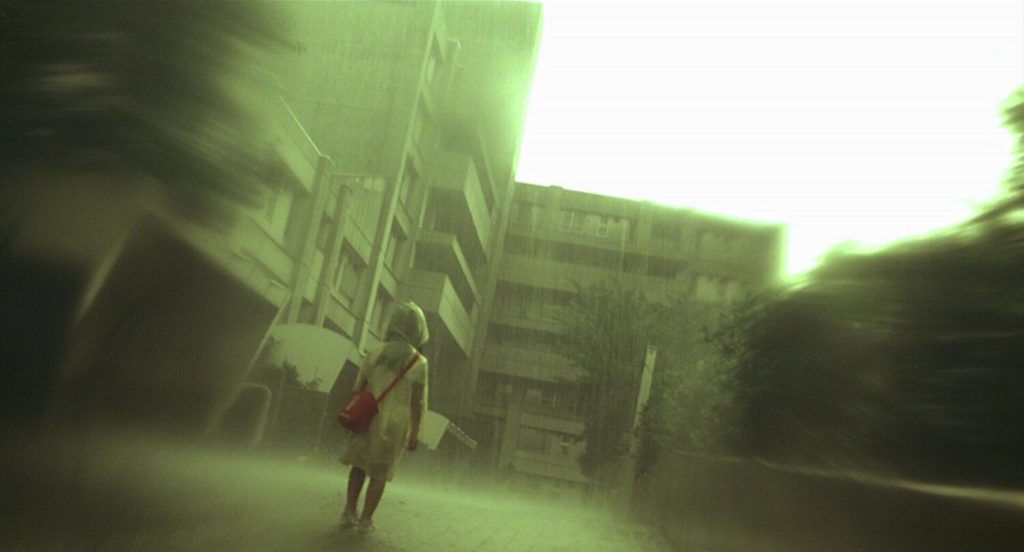
A chilling yet somber work from Hideo Nakata once again pairing up his directorial flair with the storytelling of Ringu author Koji Suzuki. While undergoing a divorce Yoshimi Matsubara (Hitomi Kuroki) moves into a new apartment with her daughter Ikuko (Rio Kanno). What starts with seemingly a small leak from the room above spirals into pure terror as the growing paranormal activity plaguing them threatens to tear mother and daughter apart. Popularized by an American remake, the original captures a special tone that is particularly hard to imitate. A must-see to any who has only experienced this tale by way of the remake. Losing some of the general fright one might expect, the film is packed with an air of melancholy that gives the story a certain heaviness that makes it stand out among the many imitators that have chased the formula Nakata popularized with Ringu. With an ending that is as sad and moving as any well-regarded drama, Dark Water uses the vehicle of a standard ghost story to tap into the much more true horror of a parent faced with the potential loss of a child.
Exte: Hair Extensions (2007)
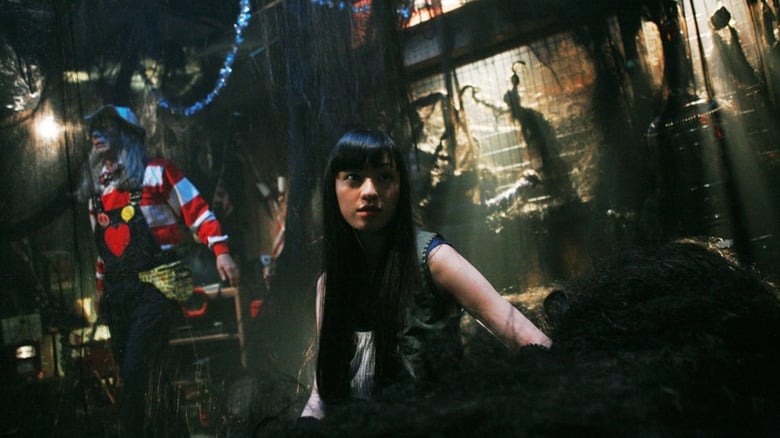
‘Exte: Hair Extensions‘ is unique because it is Sion Sono coming as close as possible to the heart and soul of the post-Ju-On J-horror. It is widely accepted that women with long, unruly hair are a fixture of the genre, and that it might have something to do with the body’s rebellion against imposed societal norms. In ‘Exte‘, Sono seems to draw heavily from the Rapunzel story, and he will also have you googling the connection between Gilles de Rais and hair. Chiaki Kuriyama plays a very likable protagonist, whose mission is to save herself and her sister from a cackling, hair-obsessed maniacal villain, who seems to control a dead woman’s ever-growing mane. Sono seems to drill deep into the genre as he carves out some spectacular imagery – the hair spilling out from every orifice, overflowing, creating mazes of itself, is magnificent, beautiful, and terrifying at the same time. Overall, this is one of the most overlooked J-horror entries from a true master of cinema and one hell (or hair?) of a ride.
Stacy: Attack of the Schoolgirl Zombies (2001)

In somewhat of a less serious entry, we have a piece of J-horror that is a personal favourite of mine. This horror comedy comes from the absurd mind of Naoyuki Tomomatsu, know for having some ridiculous films under his filmography such as Eat the Schoolgirl: Osaka Telephone Club (1997), Erotibot (2011) and Reipu zonbi: Lust of the Dead (2012). Stacy: Attack of the Schoolgirl Zombie is set in a world where girls surrounding 17 years old are affected by an illness that turns them into ‘Stacies’: they feel a strange and momentary happiness until they become zombies.
The film has beautiful warm colours, dream-like cinematography, and an impeccable soundtrack that are abjectly polar to the film’s core focus. Stacy is an open love letter to western horror, not ashamed to wear its influences on its sleeve but not as a detriment to itself. The story is entirely unique to anything else in the genre and uses these influences as fun references rather than building on their foundation. One man’s trash is another man’s treasure and that is definitely the case with this fun piece of cinema.
LiverLeaf (2018)
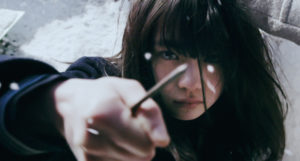
Faithfully based on the manga of the same name, written and illustrated by Rensuke Oshikiri. Directed by Eisuke Naito, Liverleaf tells the story of Nozoki Haruka and the abuse she suffers at the hands of her school bullies. After returning to her home to find it burnt to the ground with her family inside, she decides to take revenge on those responsible.
Liverleaf is unashamedly brutal in its depiction of bullying and highlights how problematic it is currently in society and the ramifications of it going unconfronted. The film can, at times, be hard to watch due to this and is highly relatable to anyone who has been bullied at any point in their life. This well-crafted connection to Nozuki is seldom seen in other revenge films and helps the scenes of revenge be, not only more brutal but more cathartic to experience. Liverleaf’s incredible use of colour or lack thereof throughout truly accompanies the story well, Nozumi’s outfit incorporating more red as her tale of revenge deepens really helps her contrast with the overall snowy environment. Liverleaf is a must-see for anyone looking for a fresh take on the revenge genre with a deep background-driven story.
Greatful Dead (2013)
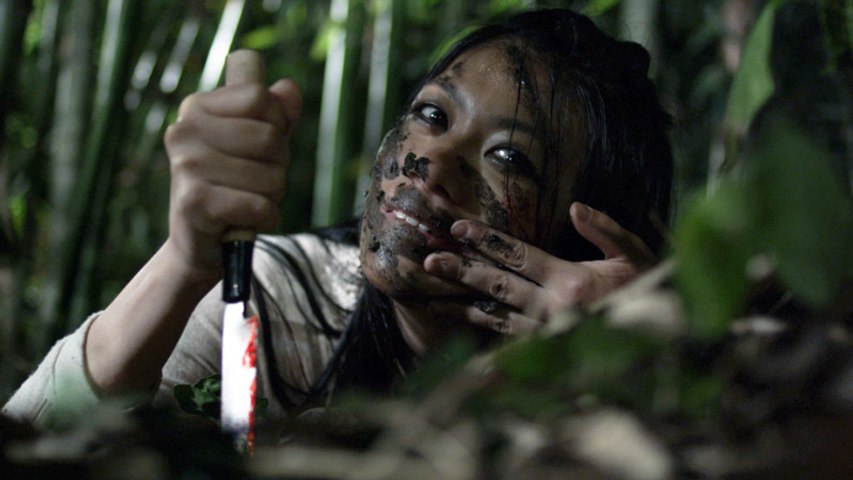
With ‘Greatful Dead‘, Eiji Uchida positioned himself as one of the masters of both morbid comedy and hair-raising horror. Starting out as a dark version of ‘Amelie’, it features a strangely likable protagonist, Nami (Kumi Takiuchi in a spellbinding performance) who comes from a wealthy family and is left all alone to pursue her growingly disturbing interests, which include voyeurism and taking selfies with dead people (in short, she just likes watching old geezers die, and will go to extreme lengths to satisfy her urges). This is a dark, cynical, morbid, creepy, and poignant riff on loneliness which soon develops into a battle of generations, a story about faith, survival, and madness with a structure that thrives on escalation and ‘oh no, they didn’t just go there!’ moments of disquieting one-upmanship. Nami eventually finds her match, to the viewer’s delight, and those who won’t be turned off by the Tsukamoto-esque cruelty of some of the plot twists will surely appreciate Uchida’s transgressive blend of horror and comedy.
More Lists
[April Fools] 10 Sequels Better than the Original – All Men are Created Sequel
Like the saying that “lightning doesn’t strike twice,” it’s rare that a sequel will attain the same level of admiration from fans as the original. However, there is another saying…
Celebrating The Best Hidden Gems of The Found Footage Horror Genre (Part 2)
Welcome to the second part of our list Celebrating The Best Hidden Gems of The Found Footage Horror Genre! We covered a lot of ground already, but have just as…
[April Fools] The Best Fog and Mist in Horror Movies
What exactly is fog and mist you may ask? Certainly we see it, but can we really touch it? I am not sure, but Dictionary.com defines fog as a cloudlike…
15 Scariest Ghosts of Fatal Frame / Project Zero
While Project Zero Maiden of Black Water has recently been ported to modern consoles with new content, I’d like to celebrate it by sharing a personal list of the ghosts…
Black Horror Part 1: Black horror has always been around
Black History month may end with February in the United States, but your awareness and exploration of black history and contribution shouldn’t end there! In this four part series we…
Shocktoberfest 2022 – My Personal Halloween Watch-List (Week 1)
Week One Welcome to Shocktoberfest 2022, the only horror movie festival curated by me! This is a list of movies I watched to prepare for Halloween, plus a thought or…



